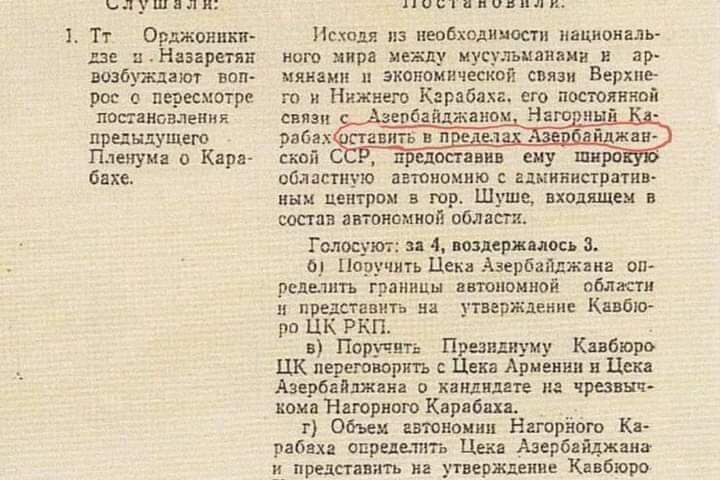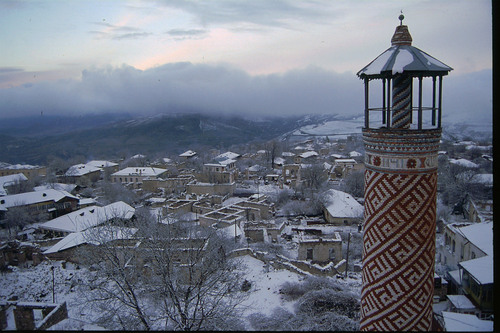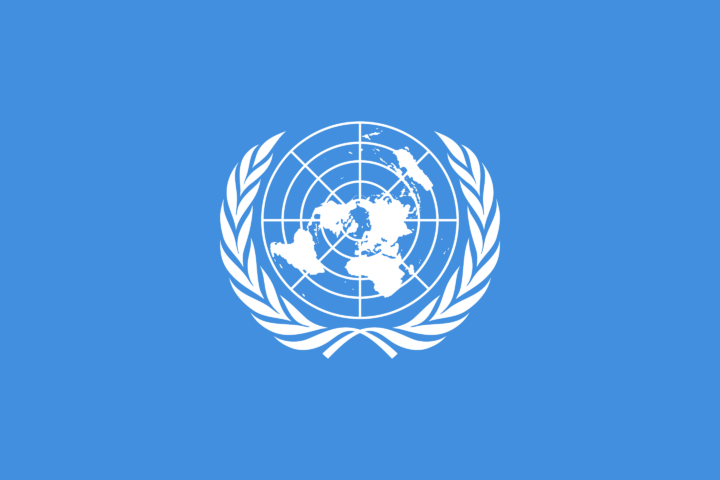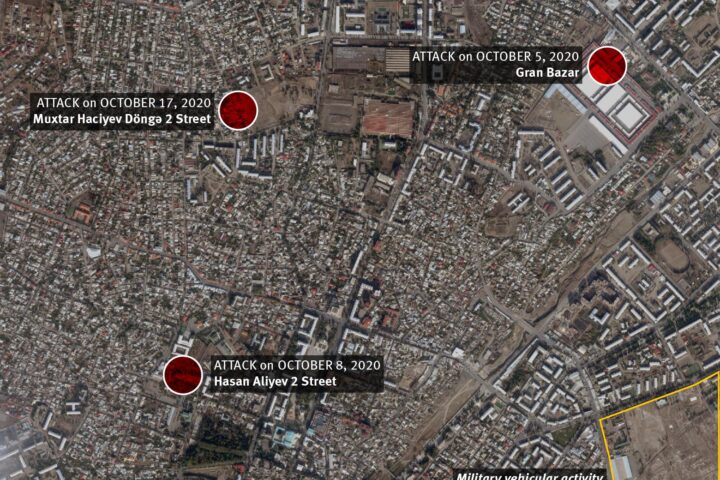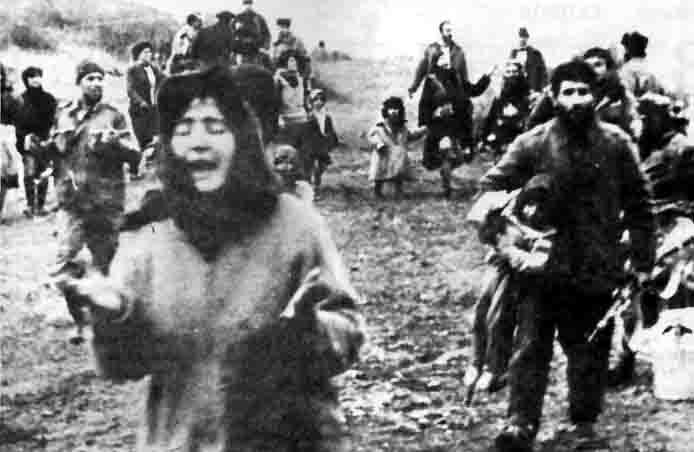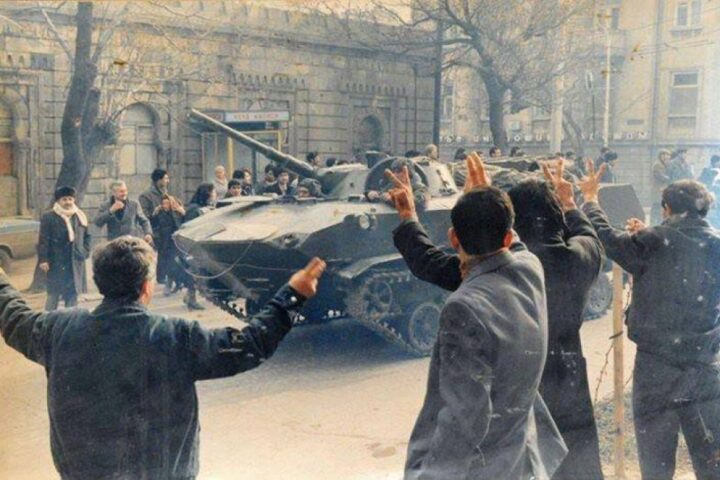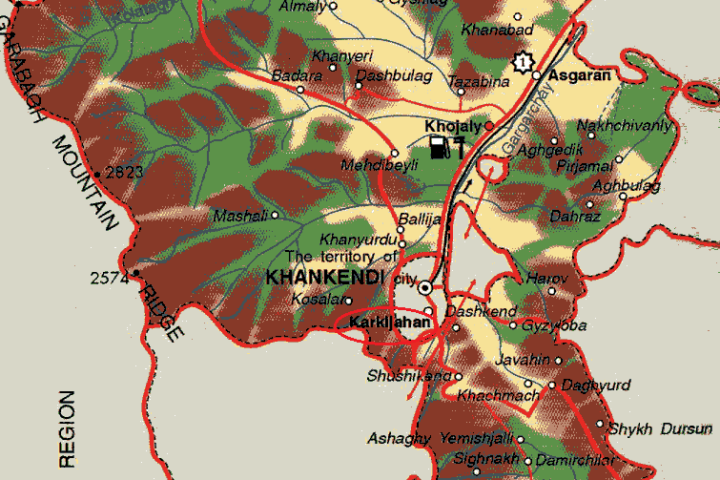It is already 16 years that the war between Armenia and Azerbaijan has been continuing with all its negative consequences, although the active military phase was over with the declaration of a cease-fire in 1994. Despite the enormous efforts to find a just solution to the problem, it has not been resolved yet. But what the just solution is, and what this solution has to be based on, one can naturally ask. And here another question immediately arises: how and why this conflict emerged.
As every problem, Armenia-Azerbaijan conflict also has its roots and in order to have a better understanding of its essence, it is necessary to shed a light on its core, for what we have to go back to the early 19th century, as the very origins of the conflict lay there.
Early 19th century, signing the treaties of Gulustan in 1813 and Turkmanchay in 1828, which gave birth to the processes with a significant impact on the future of the region, can be consid- ered a beginning of a new chapter in the history of the Southern Caucasus and Azerbaijan as its part. These treaties changed the whole picture of the region, as in accordance with them the Azerbaijani territories were occupied by Russia, and suspended the centuries-old independent Azerbaijani statehood for about 100 years. However, it was just one of the bitter results of these treaties.
Another one was a considerable demographic change by resettling a great number of Armenians from Iran and Turkey in the Azerbaijani territories. Every Russian-Turkish war and Armenian disturbance in Turkey brought a great number of Armenians to the Caucasus. N.Shavrov, who was directly involved in colonial policy of the Russian Tsar’s administration, wrote in “A new challenge to the Russian issue in Transcaucasia: Upcoming sale of Mughan to foreigners” published in 1911 in Saint-Petersburg:
From 1828 to 1830 we resettled more than 40,000 Iranian and 84,000 Turkish Armenians to Tran- scaucasia and placed them in the best State lands in the provinces of Yelizavetpol and Iravan, where the number of Armenians was insignificant, and in the province of Tiflis, – in the Borchaly, Akhaltsikh and Akhalkalak uezds… The mountainous part of Yelizavetpol province and banks of the Goyja (modern Sevan – ed.) Lake were settled by these Armenians. It is necessary to keep in mind that apart from 124,000 Armenians, which were resettled officially, a great number of Armenians settled there unofficially, so the total number of settlers considerably exceeds 200,000 […].
“A new challenge to the Russian issue in Transcaucasia: Upcoming sale of Mughan to foreigners”, 1911, Saint-Petersburg.
The successful end of the Turkish war of 1877-1878 brought about an influx of new settlers from Asia Minor: about 50,000 Armenians and 40,000 Greeks settled in the Kars province, and the emp- ty province got sufficiently great number of foreign population. Moreover, General Tergukasov brought 35,000 Turkish Armenians to the Surmali uezd, all of whom remained in the area.
After this, a continuous flow of Armenians from Asia Minor started, as these were resettled both as individuals and as families. During the course of Armenian disturbances in 1893-1894, the Armenians moved on an even larger scale. At the time of arrival of prince G.S.Golitsin, the newly appointed commander-in chief, in 1897, the number of resettled Armenians was not 10,000 as in 1894, but about 90,000 […] of 1,300,000 Armenians now living in Transcaucasia, more than 1,000,000 don’t belong to the number of indigenous inhabitants and were resettled here by us.[1]
The First World War also contributed to the increase in the number of Armenian settlers. According to the “История армянского народа” (History of the Armenian people) published in Armenia in 1980, about 350,000 Armenians settled in the Caucasus from 1914 to 1916.[2] As a result, according to “Кавказский календарь” (Caucasian Calendar), the number of Armenians in Iravan province, which served as a basis for the establishment of the Armenian State in 1918, in 1916 reached 669,8713 from 25,131 in 1828 (an increase by 26.6 times). As for the number of Azerbaijanis in Iravan province in 1916, it was 374,4824 from 81,749 in 1828 (an increase by 4.6 times) and this was without any resettlement from abroad and due to the staged expulsion of Azerbaijanis from their native lands in order to resettle Armenians.
Another bitter result of Russia’s plans to occupy Turkey was the fate of the Caucasian Albanians adhering to Christianity. It should be mentioned that Azerbaijanis formed from a mixture of different peoples, which, alongside Turks, included the Albanians, one of the autochthonous peoples of the Caucasus. Most of the Albanians adopted Islam, while a small part, who ad- hered to Christianity, was mostly Armenianized with the exception of those living in the Gabala and Oghuz districts of Azerbaijan. The present-day Armenian population of Nagorny Karabakh region of Azerbaijan, with the exception of those resettled later consists of the Armenianized Albanians.
Thus, in exchange for their service to Russia in implementation of its occupational policy, a long-standing dream of the Armenian religious authorities was realized: The independent Albanian Catholicosate was liquidated and all its parishes were subordinated to the Echmiadzin Catholicosate. From this day on, the policy of assimilation of Albanians by Armenians strengthened, and in the Armenian history, which was rewritten under the guidance of the Echmiadzin patriarch, the territories historically populated by Caucasian Albanians were presented as Armenian ones and the Albanians as Armenians, although such an interpretation is a gross distortion of the truth. The elementary fact that the Albanian language belongs to the Caucasian family of languages and has 52 letters in its alphabet, while the Armenian language is a separate branch of the Indo-European family of languages and its alphabet contains 36 letters, is undeniable evidence of serious and deep differences in the representation of the identity, including the ethnic origin of Albanians and Armenians.
Opening churches and schools in the areas settled by the Albanians, Echmiadzin through its emissaries introduced the doctrine of their Armenian origins. The struggle against any element impeding this crafty policy was merciless. And the richness with important facts denying the Armenian myths of the library of the Ganjasar Catholicosate, carrier of the centuries-old history of Albanians, center of the independent Albanian Catholicosate by the early 19th century, with what the fate of Christian Albanians was closely connected, was the reason for its transfer to Echmiadzin and liquidation.
The “cloisters, which were visited very frequently and were prosperous until 1828… after the liquidation of the Albanian Catholicosate started falling into decay, were deprived of their monastic groups, and remaining neglected, mostly began to fall into ruin.”[5] These words written at the end of the 19th century belong to bishop Makar Barkhudariants.
Under the organized policy of Armenianization of everything belonging to Albanians, the above-mentioned methods were applied to Albanian monuments as well: new elements, alien to Albanian architecture, were included in the Albanian monuments, inscriptions in Armenian were placed onto them, Albanian crosses were replaced by Armenian ones and many other methods useful to change their Albanian identity were applied.
Despite such an organized policy of assimilation, the Armenians could not absorb all Christian Albanians. Most of them even accepted the adoption of Islam in order to protect themselves against the process of Armenianization, which could be proven by the statistical data of the period between the middle and late 19th century, gathered and published by Russian Imperial authorities. And this was during Russian rule, when the Muslims were in a distinctly more disadvantaged position than Christians. However, most preferred to be Muslim, constituting the majority of the indigenous population and being in traditionally good neighbourly relations with them, in order to avoid assimilation by ethnically foreign people who had appeared only recently within the area of Christian Albanians due to the Russian colonial policy. Despite all the oppression by the Armenian side, the Albanians-Udins in the Gabala and Oghuz districts of Azerbaijan, Christian descendants of Albanians who managed to avoid Armenianization, preserved their language and traditions.
Thus, here are three factors which served as seeds of the conflict: occupation of Azerbaijani territories by Russia under the treaties of Gulustan of 1813 and Turkmanchay of 1828, resettlement of Armenians to the occupied territories and liquidation of the independent Albanian Catholicosate, the subsequent annexation of its dioceses to the Armenian Echmiadzin Catholicosate and Armenianization of the Caucasian Albanians adhering to Christianity.
Two of these factors played a key role in the establishment of the first Armenian State in the Caucasus. Against the background of the situation in the Caucasus in 1918 and taking into ac- count the possession by the Armenians of the territory, where unlike previous years, they constituted a substantial mass; a favourable ground emerged for the establishment of the Republic of Armenia on 28 May 1918. According to Armenian scholars, on the basis of the Treaty of Batum signed by Turkey with Azerbaijan, Georgia and Armenia on 4 June 1918, the territory of the first Armenian State in the Caucasus – with the capital, which was conceded by Azerbaijan on 29 May 19186 – formed a minimum of 8,000,7 9,0008 and a maximum of 10,000 sq. km. [9]
The Azerbaijani people achieved its independence, which lasted for almost 2 years, with the Democratic Republic of Azerbaijan in 1918. Various factors, including the aggression waged by Dashnak-ruled Armenia against Azerbaijan in Garabagh, Zangazur and Nakhchyvan at that time, combined to bring about a weakening of the Republic and led to its occupation by Soviet Russia in 1920. Dashnak Armenia, the independence of which, due to the increasing threat by Bolsheviks, was de-facto recognised by the League of Nations on 19 January 1920,[10] i.e. 7 days after the de-facto recognition of Azerbaijan and Georgia by the League of Nations, i.e. on 12 January,[11] was for a short period replaced by “Soviet” Armenia in the winter of 1920-1921. As “sovietization” failed to fulfil the aspirations of the ultra-nationalists, a coup d’etat was staged in February 1921. However, with the liquidation of the Dashnak rebellions in Zangazur, on 15 July 1921, “Soviet” rule was again established in Armenia. With the aim of more effective pacification of Dashnaks, the Bolsheviks chose the method of indulging Armenian nationalists. Thus, on 5 July 1921, under pressure from Stalin, the mountainous part of Garabagh was given the status of an autonomous province within Azerbaijan.
Due to “sovietization,” the territory of Armenia increased from 8,000-10,000 sq.km to 29,800 sq.km, mostly at the expense of Azerbaijani lands. As for its population, it also didn’t leave behind and the number and percentage of Armenians in Armenia also considerably increased due to the immigration of a great number of Armenians from abroad and forceful expulsion of Azerbaijanis from their native lands. Thus, according to Armenian sources, more than 42,000 Armenians immigrated to Armenia between 1921 and 1936.[12]
The next step in the resettlement was the special decree by Stalin in November 1945 on the immigration of foreign Armenians, according to which Armenia received more than 50,000 in 1946, 35,400 in 1947, and about 10,000 settlers in 1948.[13] Taking advantage of the flow of a great number of Armenians and complaining of the lack of territory for their settlement in Armenia, its leadership achieved the adoption by the Committee of Ministers of the USSR on 23 December 1947 of Decree No. 4083 signed by Stalin “On the resettlement of collective farmers and other Azerbaijani population from the Armenia SSR to the Kur-Araz plain of the Azerbaijani SSR.” Thus, 100,000 Azerbaijanis were deported from their native lands in Armenia so that “buildings and apartment houses left by Azerbaijani population with regard to their resettlement to the Kur-Araz plain to be used for settling foreign Armenians, who have arrived in the Armenia SSR.”




